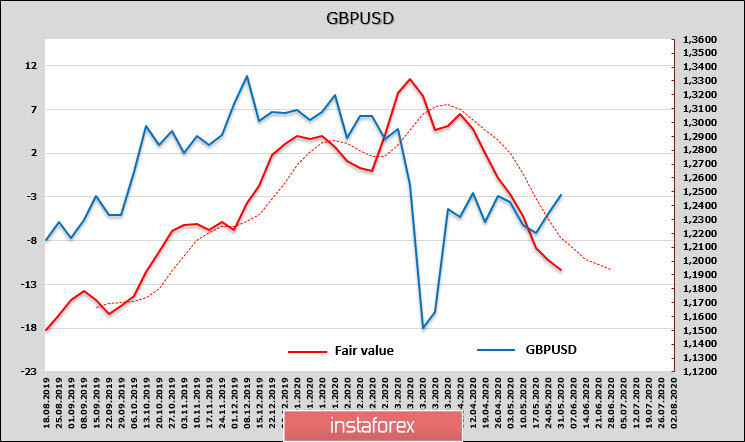The production ISM in the United States grew to 43.1p. in May against 41.5p a month earlier, but the result, firstly, is still lower than forecasts, and secondly, a number of key sub-indices continue to show confidently poor dynamics, increasing the chances of a quick completion of the current period of optimism. The employment index was 32.1%, that is, the labor market continues to decline actively, and the chances of seeing decent nonfarm results on Friday are declining. For all components of the ISM index without exception, the situation is similar - they are all below 50p, which means a continued decline in activity in the sector, and not the beginning of recovery.
The number of bankruptcies in the United States has peaked since May 2009, so pressure on stock indices will increase, and the Fed will have to look for ways to maintain a falling stock market during severe unemployment. So far, this problem has not come ahead, but after Friday, it will most likely contribute to the completion of the current wave of optimism.
EUR/USD
A key meeting of the ECB will take place on June 4, at which, as expected, the QE program will receive additional support, the range of estimates for future expansion lies in the range from 400 to 750 billion euros. The ECB is subjected to a massive "bombardment" - one or the other structures declare the need to expand the asset purchase program and offer their own calculations.
Last week, the Franco-German plan to create a stabilization fund was actively discussed. The European Commission proposed its recovery plan for 750 billion euros, and the main intrigue is whether the ECB will confirm market expectations. The need to expand support is justified, first of all, by the growing threat of deflation and the need to support the labor market.

Apparently, investors are counting on the best. Judging by the CFTC report, the excess of the euro remains significant, despite a slight decline in recent weeks. The spot price broke through the calculated level of EUR/USD and went significantly higher, and the estimated price also began to turn up, indicating that the equilibrium point will rise higher in the near future.

The euro will try to consolidate above the March maximum of 1.1150, counting on the ECB not deceiving the expectations of the markets, and will go to 1.1493 if the buyback program increases by at least 500 billion euros. In this regard, only disappointment with the results of the ECB can stop growth.
GBP/USD
The British pound is significantly behind the risk-sensitive commodity currencies, which are actively playing back the losses of the last three months. If the main risk of the last few years was the Brexit squeak, then this year COVID-19 and a large current account deficit came to the fore, which led to a cumulative effect on the background of a sharp slowdown in investment on the background of Brexit.
If the main market fears associated with COVID-19 continue to decline, Brexit will be in the foreground again. The third round of negotiations on future EU-UK relations ended on May 15 without a breakthrough, with both sides actively accusing each other of unrealistic demands. On June 1, the fourth round began, which should end before July 1. Given the fact that there is still no significant rapprochement between the parties, the risk of reaching December 31 (the end of the transition period) both without agreement and without a plan to extend the transition period is great.
As a result, investors will proceed from the increased risks, which will automatically lead to a weakening of the pound in the short term.
As for the CFTC reports, the net short on GBP increased by $ 262 million to the highest level since the beginning of December, the estimated level of the fair price is lower than the spot price and has a tendency to decline, which limits the chances of the pound to continue recovering after commodity currencies.

GBP/USD pair is currently trading near a strong resistance zone of 1.2490/2520, the next resistance is 1.2650, the chances of rising to it are low, and they are primarily associated with the exit from the quarantine restrictions. It is more likely to resume the decline, especially if the wave of optimism goes down, the decline may be without correction to the resistance zone of 1.2240 / 90.
 English
English 
 Русский
Русский Bahasa Indonesia
Bahasa Indonesia Bahasa Malay
Bahasa Malay ไทย
ไทย Español
Español Deutsch
Deutsch Български
Български Français
Français Tiếng Việt
Tiếng Việt 中文
中文 বাংলা
বাংলা हिन्दी
हिन्दी Čeština
Čeština Українська
Українська Română
Română

